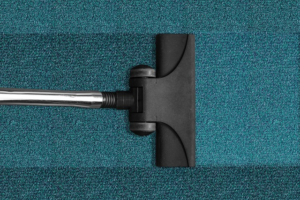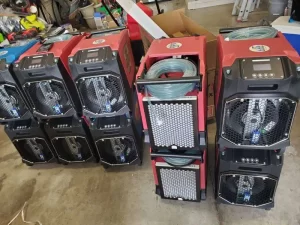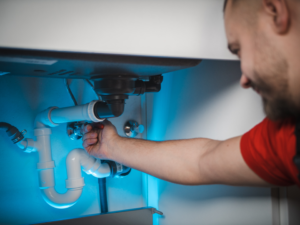Wood floors are elegant and comfortable; their warm hue adds a touch of class to the whole room, and it’s cozier underfoot than tile. While a bit more finicky than laminate flooring, a hardwood floor is also easier to clean than carpet, and it lasts longer than nearly any other material.
Being an organic material, hardwood flooring is more prone to water damage than other materials, and this can lead to dangerous mold growth that imperils your family’s health. If you have water damaged wood floors, it’s essential that you rectify it as soon as possible by calling a professional like TN Flood Kings or doing it yourself.
Hardwood Flooring Versus Engineered Wood Flooring

Before we discuss water damage, it’s important to note the different types of wooden floors you may encounter in your home, as they react a little differently to water damage.
Hardwood flooring is most common in older homes; it is, as you would expect, made from whole planks of wood.
The great thing about full wood floors is that you can sand and refinish them as often as you would like without replacing everything, which isn’t possible with our other type of floor.
In contrast, engineered wood flooring is made from strong plywood that is topped with a thin layer of real hardwood. It can’t be refinished, but it does give you the classy look of hardwood floor at a fraction of the cost.
What Are the Common Causes of Water Damaged Wood Floors?
Any excessive amounts of moisture can damage your floors, but the causes can vary. Here are some of the most frequent offenders when it comes to water damaged floors.
Flooding: When excess water pours into the home, it soaks into every surface and causes serious issues all throughout the house. In this instance, it’s almost impossible to fix on your own and you should get in touch with TN Flood Kings.
Burst pipes: High volumes of water will waterlog your floors and seep into the cracks.
Malfunctioning appliances: Many people avoid putting wood flooring in areas of the home with dishwashers or washing machines because of constant excess moisture.
High humidity: This is particularly common in bathrooms, another reason why people don’t use hardwood in these rooms. Constant steam encourages mildew growth, particularly is there isn’t enough ventilation.
Ice dams on the roof: This lets water trickle into the walls, where it will pool at the floors and spread out under the surface.
Major spills: Any spills that are left unattended will get in between the boards and swell the wood fibers, encouraging mold.
Signs of Water Damage on Hardwood Floors

What exactly does damaged wood do, and what does it look like? Let’s take a look at the most common signs that something is amiss with your hardwood floor.
Discoloration: Dark or light spots are often the first sign of water damage.
Cupping: This is when the middle of a board sags, making a bowl-like indentation.
Crowning: The center of a board pushes up, straining the nails at the edges.
Buckling: Water damaged wood floors may actually come free of the nails, leading you to trip over a loose board. This also exposes the subfloor to surface water, causing even more extensive damage.
Cracking: This is particularly common if the moisture content has risen and dropped over time. As the wood dries, it will start to splinter and warp.
Mildew: If you notice a funky smell in particular areas of the home, your floors might be infested with mold. This requires professional mold remediation sevices, so please call TN Flood Kings if you suspect mold.
Clean Water, Gray Water, and Black Water: Know Your Types
Before you start to dry out your wood floors, you need to know what kind of water was spilled so that you can decide whether to treat it on your own or get professional help.
Clean water: This is water from a faucet or a dropped glass of water. It’s safe to clean this up on your own.
Gray water: A washing machine is the most common example of gray water, followed by dishwashers. You can also take care of this yourself, but be sure to disinfect everything.
Black water: This is water that originates from flood water or sewage. You should not handle this yourself; call in water damage restoration professionals like TN Flood Kings, who have the skills and equipment to deal with this.
How To Fix Wood Floor Water Damage
Repairing your wood floors yourself can save money, particularly if the damage isn’t too severe. However, if there’s extensive damage, please call TN Flood Kings for a free estimate. We can explain the issue, find the source of the water, and bill your insurance if possible.
Let’s take a look at the simple steps involved in getting water damaged wood floors back up to snuff!
1. Remove Water and Wet Objects
First, you have to get rid of any soaked objects that are lying on the floor; this means furniture, rugs, clothes, and appliances.
To remove water that has pooled, rent a water vacuum and suck it all away.
2. Dry the Floor
Open the windows and get some cross ventilation going by using large fans or air movers, which you can rent from a local hardware store. Do not use hair dryers or heated fans, as this can warp the wood.
3. Clean Your Floors
Using a mild detergent formulated for hardwood floors, make sure everything is sparkling clean. You will also want to use a disinfectant, but don’t use anything that isn’t safe for wood.
4. Dry Floors Again
Next, you need to dry out the wood once more. Use the same tools from Step Two to get air circulating around the room.
Sand the Floor
This is only for crowning and cupping floors, not those that are still level. Use a sander to bring the flooring back to an even plane. After that, you’ll have to stain and varnish the floors again.
The entire process can take a day or two, but most of that is simply ensuring that everything is completely dry before cleaning up and sanding if necessary.
How to Protect Wood Floors from Water Damage
To prevent water damage, you have to ensure that more water doesn’t come in contact with the floors. You can do so with these helpful tips:
- Clean spills as soon as possible.
- Inspect your pipes regularly and monitor your water bill.
- Ask residents and guests to take off their shoes and leave them on a mat by the door.
- Place rugs and mats in any room with frequent water use, such as near sinks, in entryways, and under your pet’s water dish.
- Put mats under dishwashers or washing machines; this will also prevent damage to your wood floor from shifting units.
- Clean your floors regularly with wood-safe cleaners.
Frequently Asked Questions
How Long Does It Take for Water To Damage Hardwood Floors?
Wood floors are made tough, with varnishes and sealants that help repel moisture; this means that a minor spill that’s quickly cleaned up likely won’t cause water damage. However, any time that the wood is soaked and not dried out right away, you’re probably going to have some damage, even if it’s just a few hours.
Do I Need to Replace My Water Damaged Wood Floors?
Not all water damage means that your entire floor will need to be replaced, especially if the cause is a minor spill or a very localized leak. At most, you might have to pull up one or two floorboards and have these fitted back in.
If you do find that you need repairs to the floor, it’s always a good idea to have a flooring contractor handle this, as they can investigate below the wood floor and check that the subfloor is safe too.
What Happens When Water Gets Under Hardwood Floors?
If there’s moisture under the wood floor, this can cause damage to your subfloor, which is difficult and time-consuming to fix. You’ll have to pull up the floorboards to access the subfloor, then cut out and replace the damaged boards here as well.
While it’s possible to fix subfloor yourself, it’s best to contact TN Flood Kings to fully resolve the problem. Of course, you will want to avoid any water damage getting to this point through careful monitoring.
How Do You Remove Old Water Stains From Hardwood Floors?
Thankfully, there are some great DIY solutions to repair old water stains on your floor! These easy and quick fixes will have your floors shining like they were freshly laid.
Rub mayonnaise on the stain and allow it to sit overnight, then polish it away. This is especially good for water rings, as it pushes out the water and clears up any cloudy residue.
You can also use a combination of olive oil and vinegar, which will remove the stain and nourish the wood.
Struggling With Water Damaged Hardwood Floors? Call TN Flood Kings Today For a Free Estimate!








